You’ve heard of the Great Barrier Reef. You may have visited Uluru. Australia is famously full of such marvels, many of which are ancient and unchanging. But how about those special events that only come about once in a blue moon? Weather events, mass migrations, gravity-defying waterfalls and living fossils? Sign us up for these incredible Australian natural phenomena!
In the sky, under the sea, or across land, these natural phenomena are once-in-a-lifetime miracles to behold. Catch a glimpse with your family, and you’ll feel like you’ve been let in on the secrets of the natural world. Have your cameras at the ready.
Aurora Australis, Tasmania
This is the southern hemisphere’s answer to the Northern Lights. Best viewed from Tasmania, this electrical phenomenon appears as green light dancing across the night sky. Charged solar particles prompt the rare sight when they collide with gases in the earth’s atmosphere.
Hamelin Pool, Western Australia
Say g’day to the oldest life forms on the planet. The extremely salty seawater of Hamelin Pool is home to a large family of ‘stromatolites.’ Created by tiny microbes in sediment deposits, these living fossils date back 3.5 billion years. Take the Boolagoorda loop track to see them. The only other stromatolite site this well-developed is in the Bahamas.
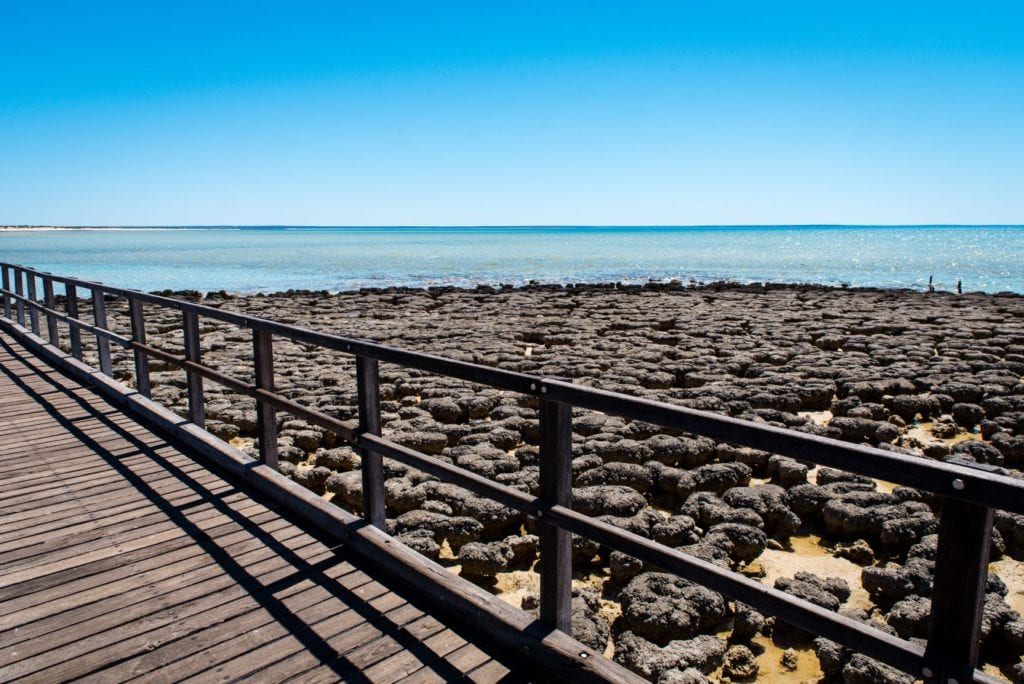
Red Crab Migration, Christmas Island
Every year on Christmas Island, an estimated 44 million red crabs migrate to the sea to lay their eggs. We repeat: 44 million. Swarming on roads and in town squares, the crabs look like a rolling red sea. This event occurs at the start of wet season, which is usually around November.
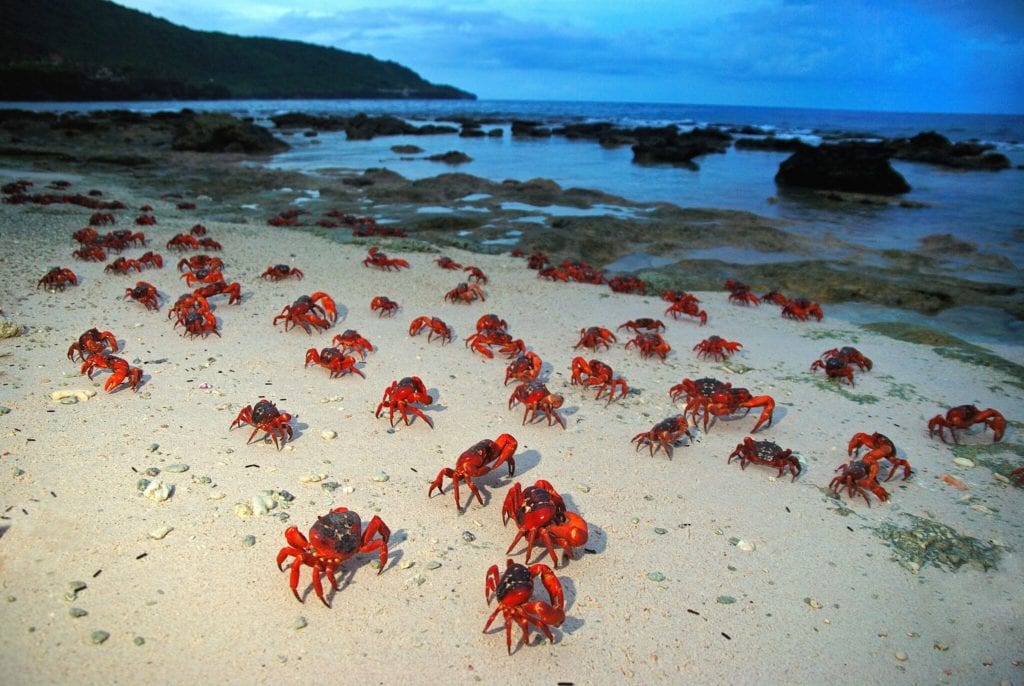
Wildflowers, Western Australia
Between July and November, the outback plains of the Pilbara, Goldfields and Coral Coast in Western Australia are painted in remarkable colours. This Australian natural phenomena includes more than 12,000 species of wildflower blossom, 60% of which are not found anywhere else on the planet. Special, huh?
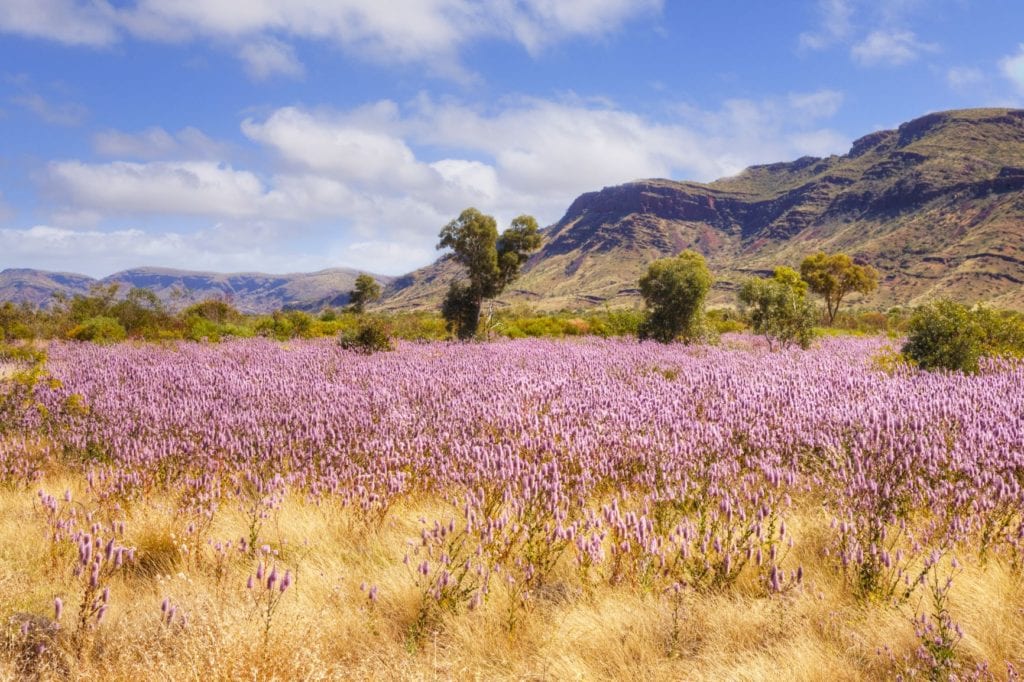
Staircase to the Moon, Broome, Western Australia
Between the months of March and October, a brilliant optical illusion can be seen on the mudflats of Roebuck Bay in Broome. It will look like you can climb straight up to the moon, because its reflection looks a lot like a ladder or staircase.
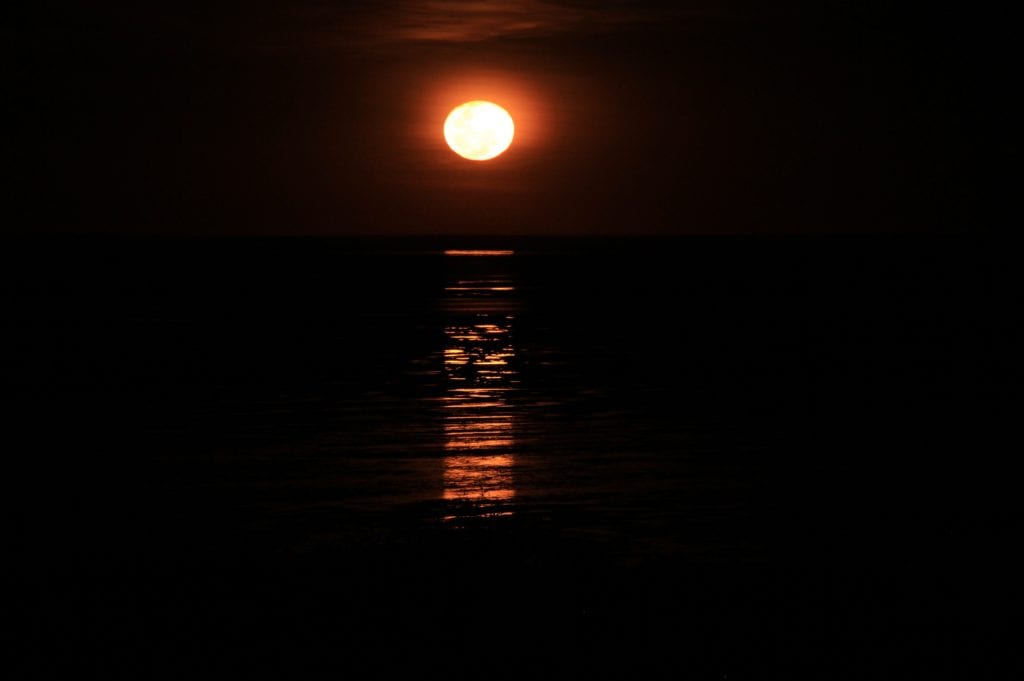
Pink Lakes, Western Australia
Step straight into a Dr. Seuss-like topsy-turvy world where the water is pink with a visit to one of Western Australia’s pink lakes. Hutt Lagoon on the Coral Coast is a popular choice and one of Australia’s more photographed natural phenomena. Lake Hillier is especially remarkable. Only a road and some trees separate its rosy waters from the stark turquoise of the Indian Ocean.
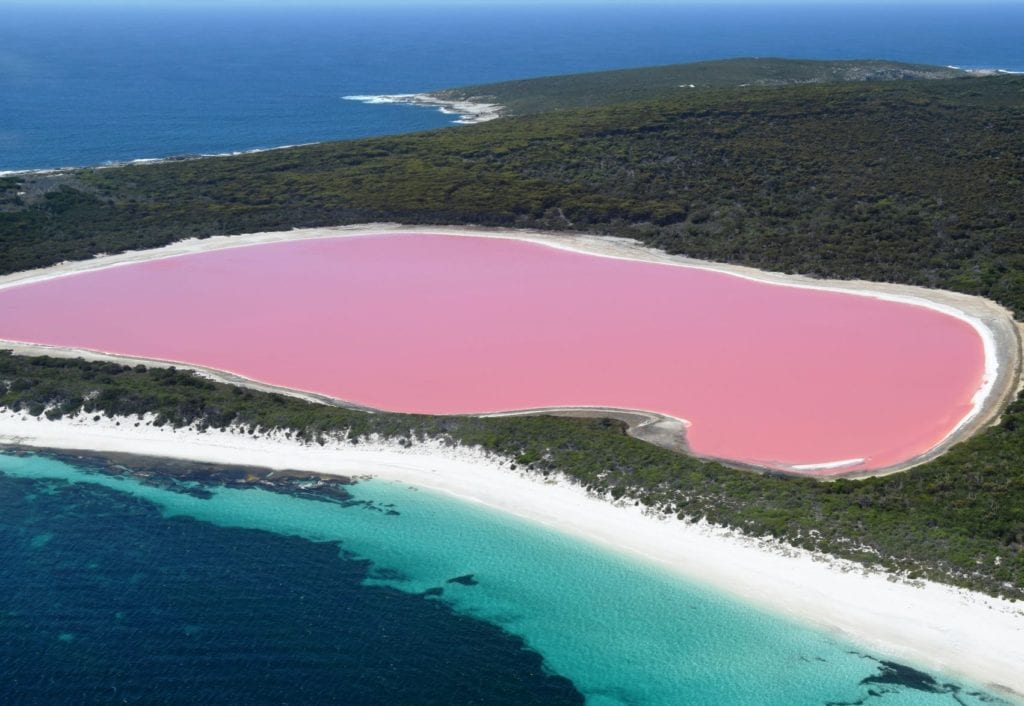
Coral Reef Mass Spawning, Queensland
This annual event sees several species of coral polyps simultaneously release their reproductive cells into the water to be fertilised. The Great Barrier Reef is a good spot to see crystal waters transform with clouds of red and orange.
Bio-luminescence
The word dinoflagellate is unlikely to make you think of magic. But these tiny, single-celled organisms found on seashores illuminate in a bright blue when disturbed. You’ll feel like a family of wizards conjuring up stars in the sand and the water. Definitely one of our favourite natural phenomena on this list, not uncommon on the NSW south coast.
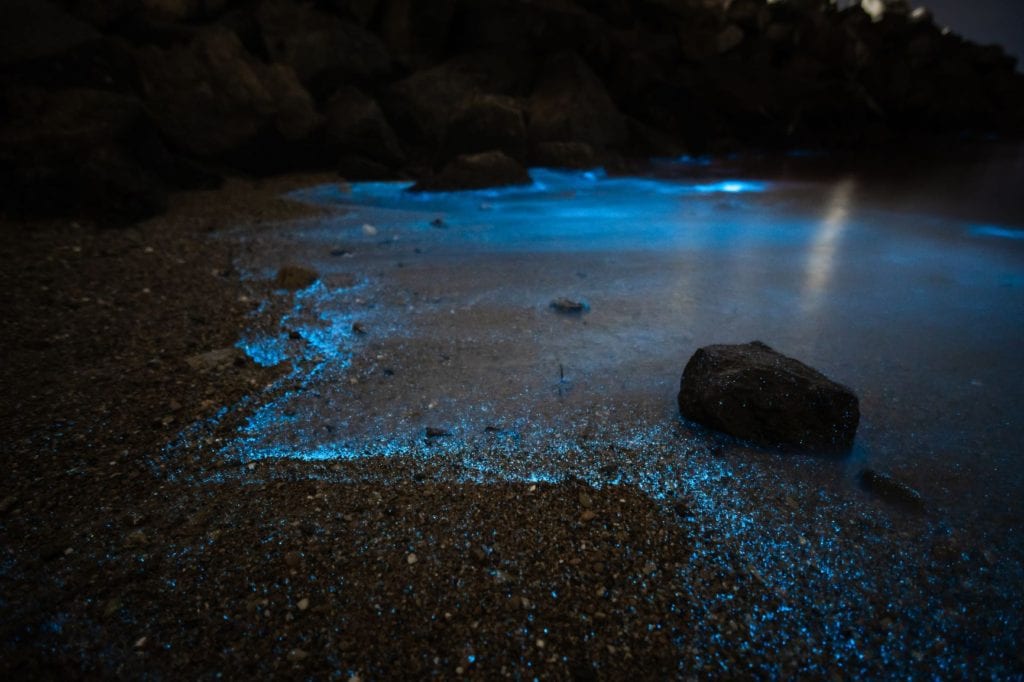
Horizontal Waterfalls, Western Australia
Talbot Falls in the McLarty Range in the Kimberley defy the laws of gravity by flowing horizontally. Tides cause the seawater to swell up in one pool so rapidly that it rises as high as 5 metres before pushing through the narrow cliff passages to the next pool. As the tide changes, the direction of the falls switches and forms whirlpools.
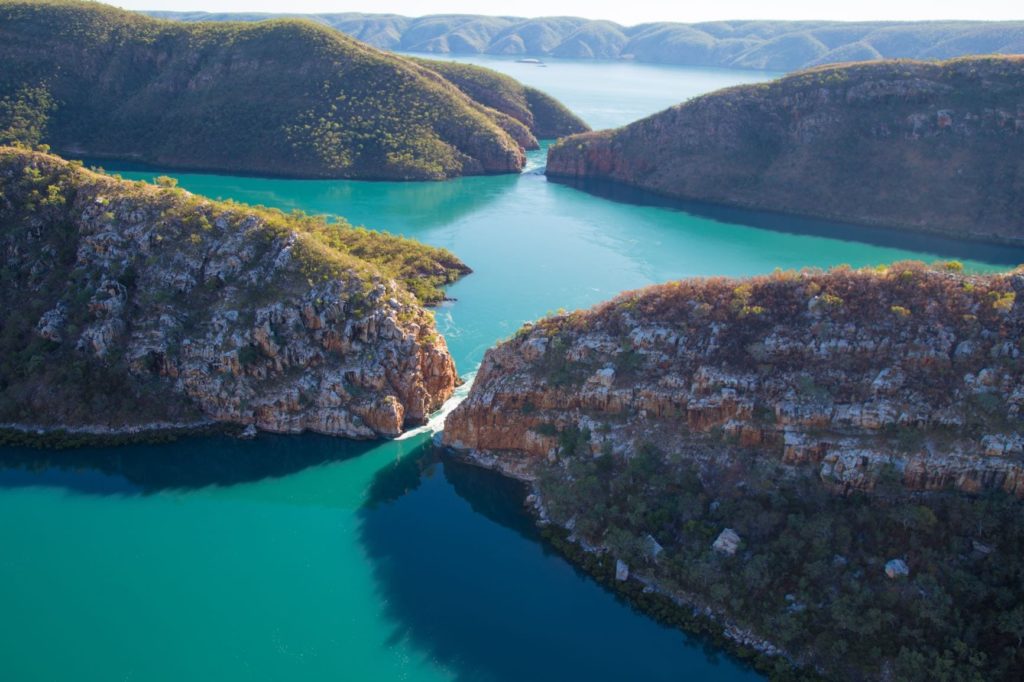
Morning Glory Clouds, Queensland
Look up at the spring sky in the Gulf of Carpentaria to see clouds like you’ve never seen them before. This Australian meteorological phenomena happens when cool ocean temperatures meet the warm inland winds.
Wolfe Creek Crater, Western Australia
Ever seen a meteor landing site? This one is certain to leave an impact, figuratively speaking. Wolfe Creek Crater, near Sturt Creek in Western Australia, was created by a meteor impact 300,000 years ago. At 880 metres in diameter, it is the second-largest crater in the world in which meteorite fragments have been found.
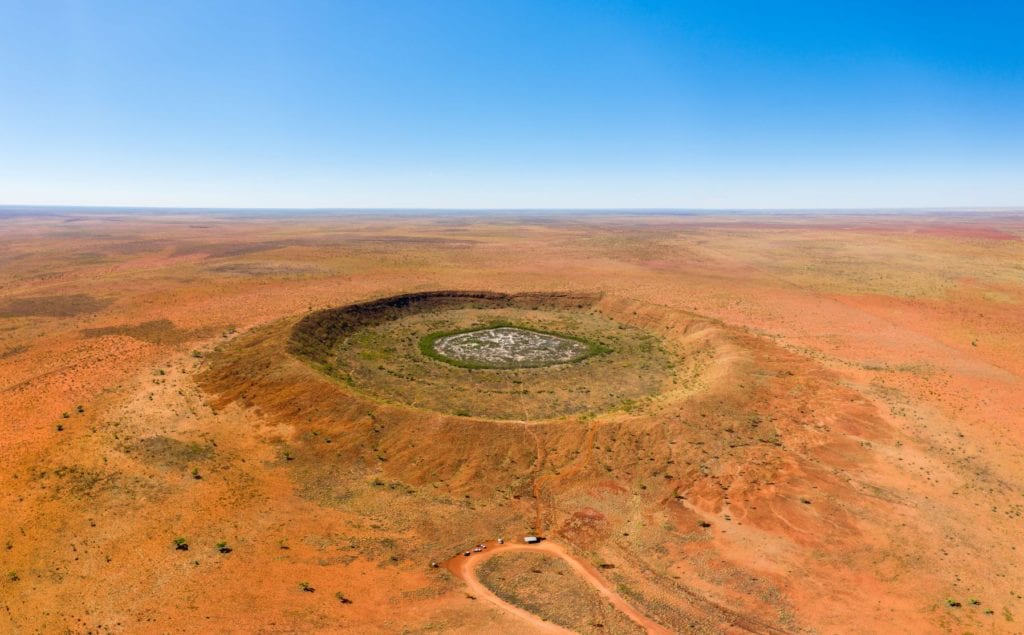
Locust Plagues, Outback NSW
Capable of causing damage of Biblical proportion, the locust population explodes after heavy summer rains in the central west. These pests destroy crops and pastures, eating everything they pass. This is one Australian natural phenomena that we’d rather didn’t happen that often.
Undara Lava Tubes, Queensland
Approximately 190,000 years ago a volcano erupted with enough lava to fill Sydney Harbour three times. As it flowed, the outside lava cooled but the inside continued moving, creating a tube shape. Lush vegetation has transformed these tubes into ecological paradise which you can visit on a guided tour. Some tubes have wheelchair access.
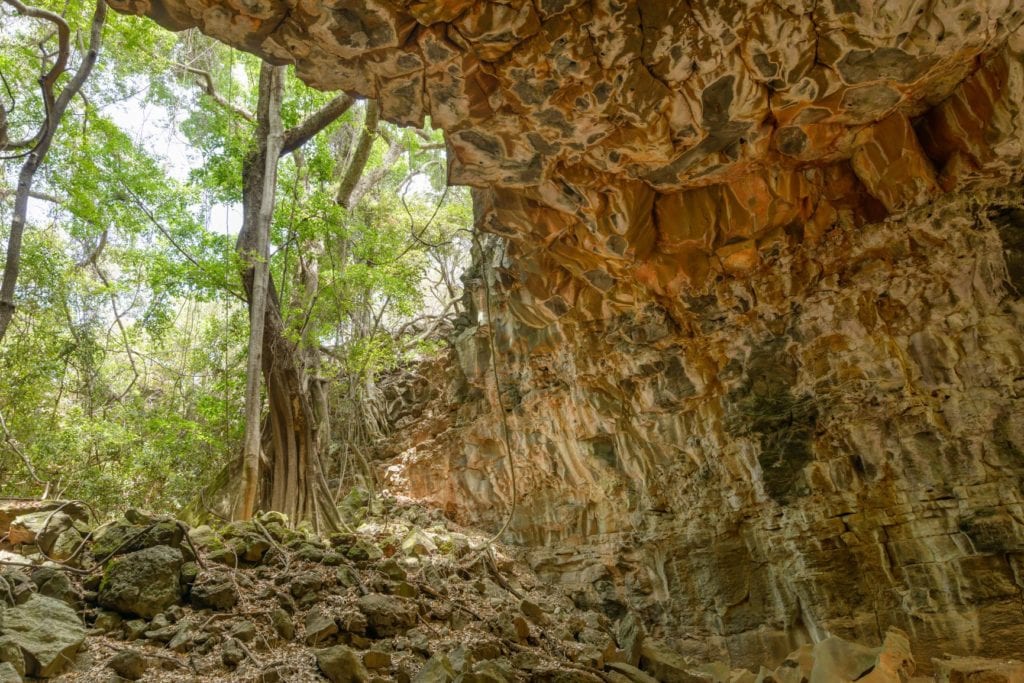
Fields of Web, NSW
Prepare for one of the most creepy and crawly natural phenomena we could find! In Wagga Wagga in 2012, swarms of spiders spun their webs up to the tops of trees and bushes to escape floodwaters. The result? An ocean of white fairy floss! Also known as spider rain, angel hair or mass ballooning, this natural phenomenon has since occurred in Goulburn and even Tasmania.

READ MORE:
Top 15 Instagram-worthy destinations around Australia
Iconic Aussie animals and where to find them
Aussie road trip stops you need to make

